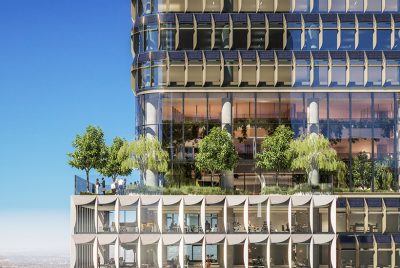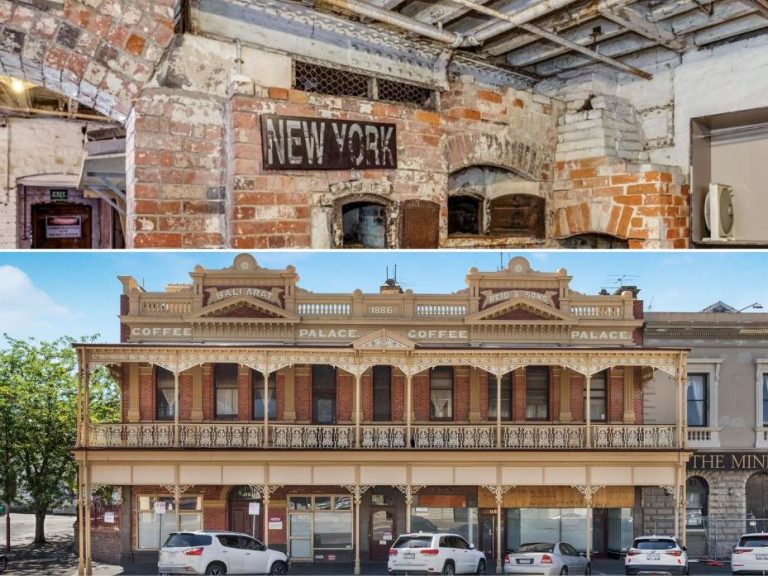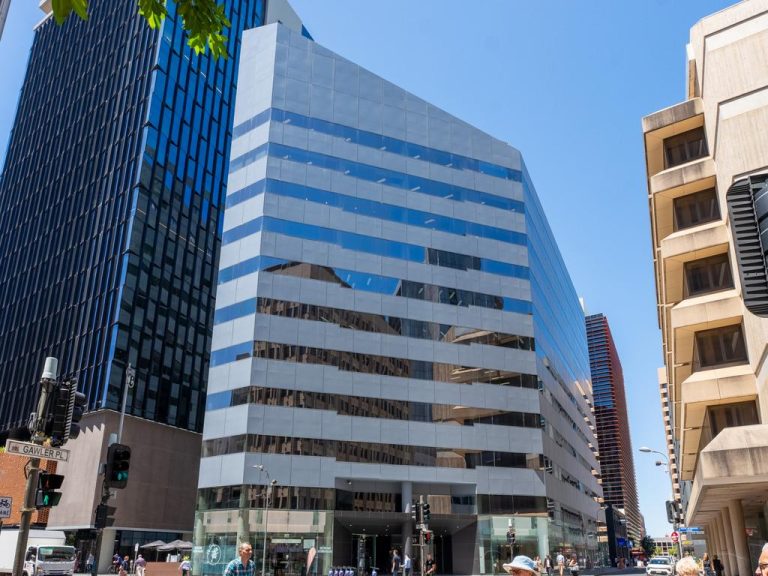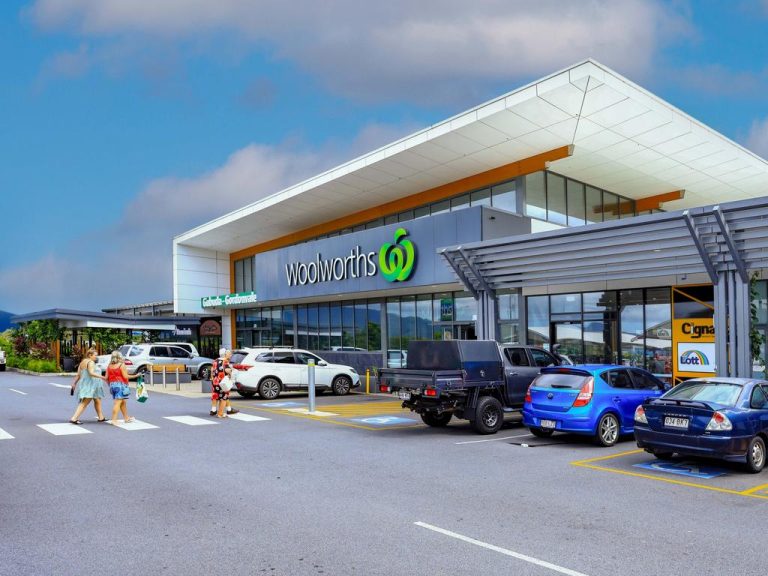The solar skin on a Melbourne tower could lead the way in sustainability

Cbus Property’s $1 billion Melbourne development will showcase one of the world’s first large-scale solar skin facades on a commercial development, casting a spotlight on the future of this sustainable technology.
The Cbus development, which is at the revised revised development application phase, will occupy a corner block at 435 Bourke Street, and feature 60,000 square metres of office space across 48 levels, designed to house more than 5,500 workers.
Its 360-degree aspect will allow it to absorb all-day sunshine into transparent vertical photovoltaic panels. Their self-shade capabilities will reduce direct heat gain while they use solar energy to generate 20% of the building’s electric base requirements, with the balance to be powered by off-site renewable electricity.

The new Cbus tower as seen from Queen Street. Picture: Bates Smart
Jorge Chapa, head of market transformation at the Green Building Council of Australia, said seeing the relatively new solar skin on an Australian commercial building is “groundbreaking”.
“It’s very exciting. We’ve always wanted to see the application of this technology at scale” he said.
Su-Fern Tan, CBRE’s National Director ESG, said it’s fantastic to see solar extended beyond rooftop panels.
“Instead of trying to deal with the heat load entering the building through air conditioning, solar gains are partially converted to energy instead, which is brilliant.”
News of the application follows approval given in October for tech giant Atlassian’s new Sydney headquarters. The around-40-storey, $1 billion-plus hybrid timber tower, designed by architects SHoP and BVN, will have BIPV mounted in its zig zag facade. While this will provide a percentage of the building’s energy, the remainder will come from green energy sources.
Both the Cbus Melbourne development and the Atlassian building in Sydney are due to be completed in 2025-2026.
Meanwhile in Seoul, energy provider Hanwha completed the retrofit of its headquarters in April 2020, with the installation of a solar skin that accounts for 4% of the building’s daily energy consumption. The building was fully occupied throughout the upgrade.

Hanwha’s building in Seoul has been retrofitted with a solar skin. Picture: UNStudio/©Rohspace
Designed by UNStudio, its panels are set in various and irregular ways, designed to capture sun throughout the day.
Path to net zero
A global increase in BIPVs on new commercial developments, along with retrofits, would give companies a boost on their path to net zero emissions, Ms Tan said.
Cian Davis, director of architectural firm Bates Smart who led the design for 435 Bourke, said carbon offsetting alone may not be enough going forward.

The solar skin on the Cbus tower is designed to generate more energy than traditional roof solar panels. Picture: Bates Smart
“Cbus saw this as a way to do something more meaningful and generate some power on-site,” he said.
“I think that’s a major step forward in how we’re designing office buildings and how we’re interacting with the overall environment.”
The ability to generate 20% of power on-site, as opposed to the 2-3% of standard solar panels, is a “significant” leap, he added.
Minimal costs, higher value
Mr Davis said the cost of implementing a solar skin on a new development is negligible because the panels cost little more than conventional building materials.
But it could be a different story for retrofits.
“Using current market mechanisms, the reduction in energy costs alone won’t be enough to fund a facade upgrade,” Ms Tan said.
But she added that buildings with BIPV should score higher on green star ratings, increasing their value.
Knight Frank’s annual Active Capital Report this year identified for the first time how commercial buildings with a higher NABERS rating attract higher sales prices. Green-rated office buildings in Sydney and Melbourne with a NABERS rating of 5 or more command an 18% premium.
Solar skins also reduce operating costs.
“A typical solar panel pays for itself in seven years in terms of energy consumption. BIPV may pay for itself in 10 years,” Mr Chapa said. “That would make economic sense.”
Sunny tomorrow
Market reports for the global BIPV industry estimated its value at $A14.3 billion in 2020 and project it will double in value by 2027 to $32.2 billion.

The Atlassian building in Sydney will also feature a solar skin. Picture: BVN
Australians have traditionally been keen adopters of solar power; we have the world’s highest number of rooftop solar panels per capita. The Cbus and Atlassian developments could be the start of the same for BIPV.
Ms Tan believes the biggest barrier to companies installing solar skins would be cost, particularly with retrofits.
“We need to see more financial incentives encouraging initiatives like these,” she said.
“Australia certainly isn’t a leader in this space, but it doesn’t mean we can’t be.”







